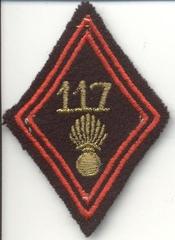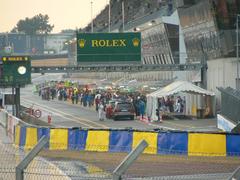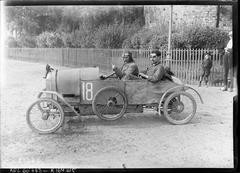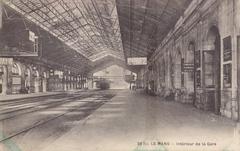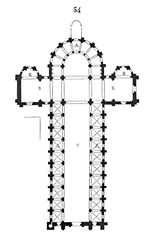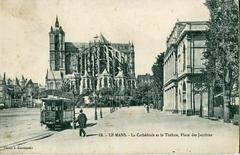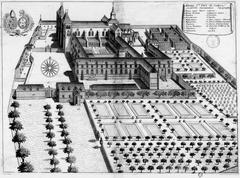Stade Léon-Bollée: Visiting Hours, Tickets & Le Mans Historical Sites Guide
Date: 03/07/2025
Introduction
Stade Léon-Bollée, located in Le Mans, France, is an emblematic site that has witnessed more than a century of sporting history and continues to resonate in local culture—even after its closure and demolition. Originally established in 1906 and named after automotive pioneer Léon Bollée, the stadium became the heart of Le Mans football and a cherished landmark for the community. Although the stadium no longer hosts matches, its legacy endures, and its site is being developed into Parc Beaulieu—a contemporary residential and green space designed to honor the area’s vibrant past.
This guide offers a thorough exploration of Stade Léon-Bollée’s history, current status, practical information for visitors, and recommendations for nearby attractions. Whether you are a football fan, a history enthusiast, or a traveler seeking the essence of Le Mans, this article will equip you with the essential knowledge to appreciate the stadium’s enduring impact and the city’s rich cultural heritage (La Tribune Mancelle, Vitav.fr, France 3 Régions).
Table of Contents
- Historical Overview
- Current Status and Redevelopment
- Visitor Information (Accessibility, Tickets, Tours)
- Nearby Attractions and Travel Tips
- Cultural Significance
- FAQ
- Practical Tips
- Conclusion
- References
Historical Overview
Origins and Early Years (1906–1971)
Constructed in 1906 in the Madeleine district, Stade Léon-Bollée was initially a velodrome and multi-sport facility, reflecting Le Mans’ innovative spirit. Named for Léon Bollée, the stadium quickly became a focal point for athletic events and, from 1942, for professional football with the Union Sportive du Mans (USM). The stadium expanded in 1946 and was re-inaugurated in 1953, solidifying its role as the city’s main sports venue. Notably, its first major international match and the installation of floodlights in 1971 elevated its status within the French sporting landscape (La Tribune Mancelle, fr-academic.com).
Modernization and Club Unification (1985–1998)
Le Mans’ football scene transformed in 1985 when USM merged with Stade Olympique du Mans to form MUC 72 (now Le Mans FC). The stadium was renovated, with new stands constructed and capacity expanded to accommodate a growing fanbase. The 1988 expansion coincided with promotion to Division 2, and temporary stands were sometimes required for high-demand matches. By 1998, the stadium could host approximately 12,000 spectators and featured distinct stands such as the SEM (Chancel) and Presidential stands (La Tribune Mancelle, fr-academic.com).
The Golden Era and Ligue 1 Promotion (2003–2010)
The early 2000s marked the stadium’s golden age. In 2003, Le Mans FC achieved its first promotion to Ligue 1, prompting a final expansion to nearly 18,000 seats. The stadium became synonymous with sporting passion and hosted memorable moments, including record attendances and the rise of passionate supporter groups. However, urban constraints prevented further growth, leading to the eventual construction of the MMArena, which opened in 2011 (RMC Sport).
Decline, Abandonment, and Demolition (2010–2025)
The last official match at Stade Léon-Bollée took place in December 2010. After Le Mans FC moved to the MMArena, the stadium fell into disrepair. Demolition began in 2020, with the final major remnant—the Chancel stand—scheduled for removal in 2025. The site’s redevelopment into Parc Beaulieu marks a new chapter, blending housing, green spaces, and community facilities (Actu.fr, France 3 Régions).
Current Status and Redevelopment
Parc Beaulieu: From Stadium to Community
The former stadium is being transformed into Parc Beaulieu, a residential neighborhood designed to foster social diversity and urban integration. The development includes:
- 88 individual houses
- A senior residence (71 units)
- Sports and recreational facilities
- Landscaped green spaces
While the Chancel stand temporarily remains for local football groups, the area is an active construction zone with restricted access. The final demolition of the stand and completion of the residential project are expected by the end of 2025 (Actu.fr).
Visitor Experience
Access to the site is restricted due to safety concerns and ongoing work. There are no official visiting hours, tickets, or tours available at Stade Léon-Bollée. The only accessible areas are for residents of Parc Beaulieu and construction personnel. Visitors are strongly advised to respect all safety barriers and signage.
Visitor Information
Accessibility
- Public Access: Not available. The site is closed to the general public.
- Mobility: Due to construction, terrain is uneven and may be hazardous.
- Alternative Sites: For football and sports heritage, visit MMArena (Marie-Marvingt Stadium), the current home of Le Mans FC.
Tickets and Tours
- Stade Léon-Bollée: No ticket sales or tours.
- MMArena: Tickets for Le Mans FC matches are available via the official club website and authorized vendors.
- Le Mans Heritage Tours: The local tourism office offers city tours covering sports history, including the legacy of Stade Léon-Bollée.
Nearby Attractions and Travel Tips
- Le Mans Old Town (Cité Plantagenêt): Medieval streets, Roman walls, and Le Mans Cathedral are a short distance from the former stadium (Le Mans Tourism).
- 24 Hours of Le Mans Circuit: Motorsport enthusiasts can visit the legendary circuit and museum (Sarthe Tourisme).
- Vélodrome Léon Bollée: An active cycling venue named in honor of the stadium’s namesake (Sarthe Tourisme).
- Museums: Musée de Tessé and Jean-Claude Boulard Museum offer insights into local history and art.
Getting There: Le Mans is easily reached by TGV (about 1 hour from Paris) and has an efficient local bus and tram network. Public transport is recommended for city center and MMArena visits, as parking near the former stadium may be limited.
Cultural Significance
Stade Léon-Bollée was more than just a football stadium; it was a pillar of Le Mans’ communal and sporting identity. For over a century, it hosted 469 championship matches and served as a gathering place for generations of residents. The stadium’s architecture, vibrant supporter culture, and urban location next to the city’s cathedral contributed to its enduring legacy (RMC Sport, fr-academic.com).
Even as its physical presence fades, the memory of Stade Léon-Bollée lives on in local pride, artistic tributes, and the city’s broader sporting narrative. The transformation into Parc Beaulieu demonstrates Le Mans’ commitment to balancing heritage with modern urban needs.
Frequently Asked Questions (FAQ)
Is Stade Léon-Bollée open to visitors?
No, the site is closed due to demolition and redevelopment. There are no official tours or tickets.
Are there any remnants of the stadium still visible?
As of mid-2025, only the Chancel stand remains, scheduled for demolition by the end of the year.
Where can I watch football in Le Mans now?
Le Mans FC plays at the Marie-Marvingt Stadium (formerly MMArena).
Are there alternative historical sites to visit nearby?
Yes, including Le Mans Old Town, Le Mans Cathedral, the 24 Hours circuit and museum, and the Vélodrome Léon Bollée.
How can I learn more about Le Mans’ sports history?
Guided tours are available through the Le Mans tourism office, and local museums offer exhibitions on the city’s sporting legacy.
Practical Tips
- Respect safety barriers and signage at the former stadium site.
- Plan to visit alternative attractions for a fulfilling Le Mans experience.
- Use public transport or city center parking for convenience.
- Daytime visits to the area are safer and offer better access to nearby sites.
- Download the Audiala app for exclusive guides, interactive maps, and updates on Le Mans’ historical and sporting venues.
Conclusion
While Stade Léon-Bollée no longer welcomes crowds, its story remains integral to Le Mans. The site’s transformation into Parc Beaulieu represents a new chapter, blending respect for the past with forward-looking urban renewal. For visitors, exploring Le Mans’ football heritage and historic landmarks offers a meaningful connection to the city’s vibrant culture. Stay informed about local developments and deepen your experience by using dedicated travel apps and tourism resources.
References
- La Tribune Mancelle
- Vitav.fr
- France 3 Régions
- Sweet FM
- Urbex Session
- RMC Sport
- Actu.fr
- Sarthe Tourisme
- Le Mans Tourism
- fr-academic.com
For more guides and travel tips, download the Audiala app and follow us on social media to stay connected with the latest updates on Le Mans’ historical and sporting sites.
